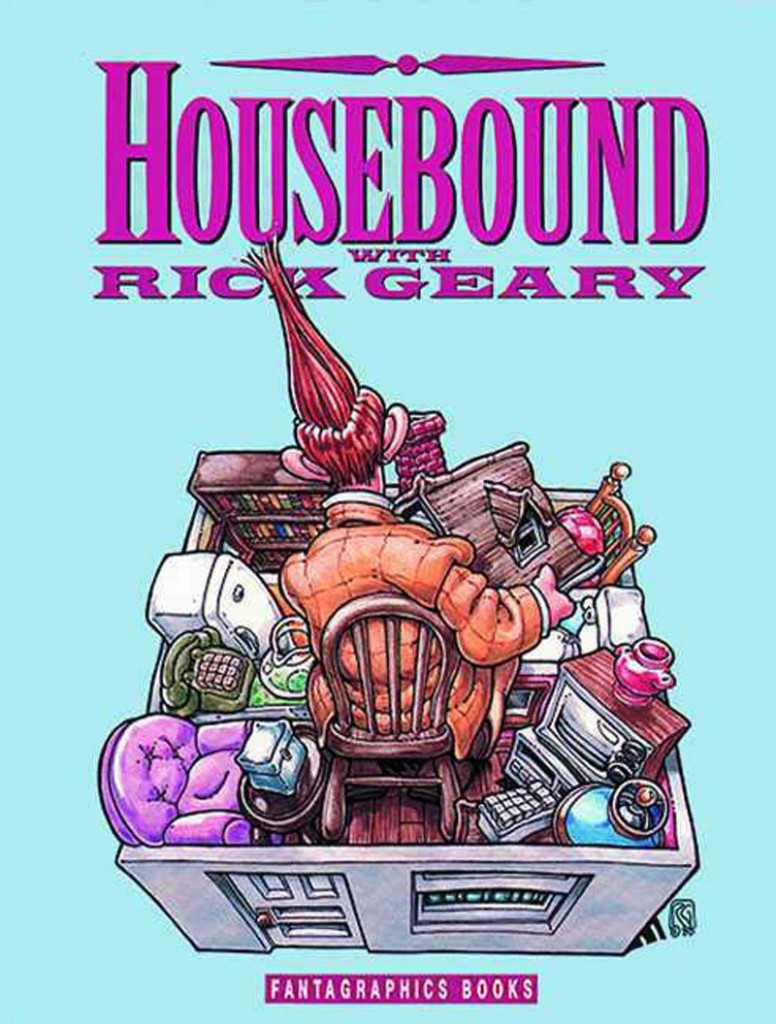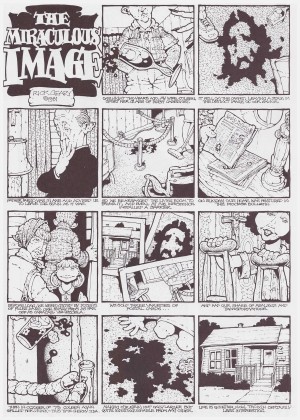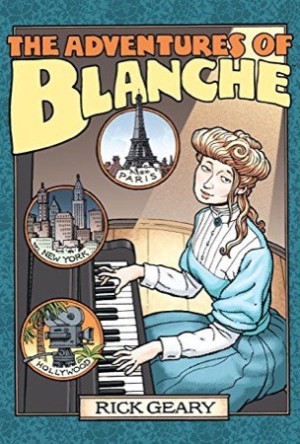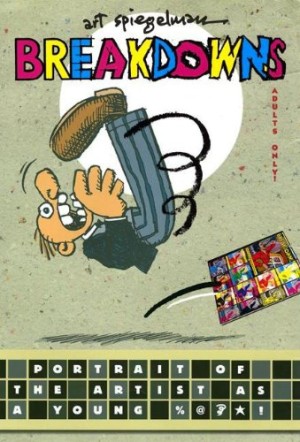Review by Graham Johnstone
Before his book-length Treasury of Murder series, Rick Geary was known for quirky, evocative shorts. They’re so short, that this hundred page collection packs in fifty – some five years worth.
Geary’s urbane and charming pages looked slightly out of place in Raw, next to the punk rock ugliness of Gary Panter, or Kaz. Yet a closer look reveals commonalities: a fascination with American popular culture, a reaction against narrative constraints, and a playful dissonance between words and images.
As the title suggests, Housebound is a revised edition of At Home with Rick Geary – the main omission being the short colour section. It opens with ‘Young Eisenhower’ from 1977. Visually, the mechanical lines, bland zip-a-tone, and un-ironic cuteness reveal it as the faltering first effort. Conceptually, though it’s more impressive – the early years of the President are implied by a mere dozen non-sequitur snapshots. It’s a mock family album, and the captions are perfectly finessed: either absurdly redundant or quite the opposite. ‘The Hallway Downstairs’ shows exactly that, whereas the snapshot of a man resting on his hoe, which we expect to read ‘Grew up on a farm’, simply says “Carrots.”
Most of these ‘stories’ are ostensibly non-fiction: memoirs, reportage, or self-help. Just check the titles: ‘The Life of a Film Buff’, ‘The Man in the Iron Lung’, and ‘Making it In Hollywood’. Some, like ‘San Diego Transit’ are, on the face of it, simply lists, but Geary’s eye for odd visual details, and droll captions, edge them towards poetry. In ‘Let’s Get Organized’, for example, the drawing of the ‘Single Edge Rigid Ruler’ refutes the caption, and that’s no mere office clock, it’s a ”Visionette”. The title captions in ’The Age of Condos’ channel the aspirations and dreams of the unseen customers so well that it’s like a critical masterclass in marketing: ‘Sunburst’, ‘Vineyard Knolls’, ‘Fashion Hills’, etc. ‘Waitress School’ is cast as a student assignment, and shows his keen ear for voices and phrasing: “Something I didn’t know – always serve a wedge of pie pointed toward the customer.” It has the plausibility of a real, found item, or at least the cherry-picked highlights.
Legendary media commentator Marshall McLuhan, described comics as a ‘very participative medium’ – the reader has to fill in what happens between panels. Geary’s comics leave us some of the largest spaces to fill. They almost resemble film trailers, with the fragments chosen not major events, but telling details of a more gentle sort.
He also likes to dismantle and subvert narrative expectations. Take ‘The Day Nothing Went Right’ – it’s packed with tiny panels and long captions. These, in turn, are packed with details and micro-incidents that in the end go… essentially nowhere. He’s really showing us “The Day that Wouldn’t Become a Story”.
It’s helpful to see these in chronological order. Geary gradually refines his distinctive style – the caricatured, slightly bulbous, inflated figures, with their exaggerated movements, all rendered in clean lines, with minimal, stylised textures. In the later stories, he allows himself more space and varied layouts. This and the rendering progressively move towards the look of the Treasuries, only without the hatched lines mimicking period engravings. Admirers of his crime books will find plenty of clues to them here: there’s Victoriana, murder, and sometimes both together.
This, like the earlier edition is now out of print, but used copies are worth tracking down for anyone interested in well-observed, artful, inventive comics.





